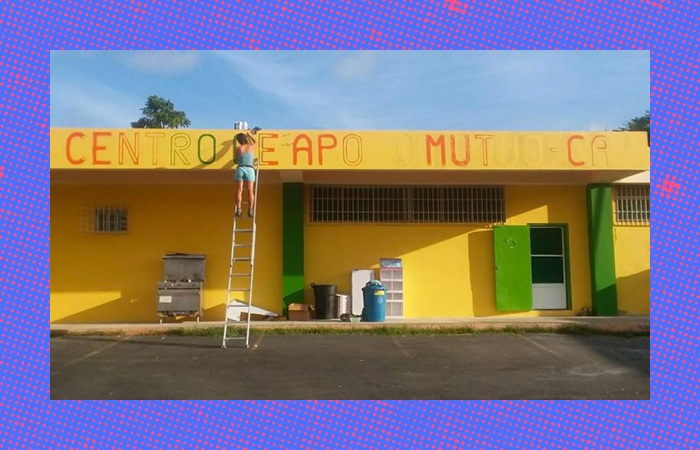1
El Hormiguero: Centro Social Autogestiónado

Slowly, a small group is converting an abandoned, deteriorating building in San Juan neighborhood Santurce into a community center. Once a government office, a private developer – who apparently changed plans – later bought it and left the three-story building to rot. Eight years later, in December of 2016, El Hormiguero began to take shape.
Gabriel Hatuey joined the collective during the summer. After putting a dent in rehabilitating the space, the group began hosting public events, but its work accelerated post-storm. El Hormiguero currently has three programs steadily running: Cine Hormiga nights, where it screens films and documentaries; sporadic lectures, discussions, and study groups centered on political and social topics, like last week’s intro to Italian Marxist philosopher and politician Antonio Gramsci; and martial arts and self-defense classes, dubbed Hormigas Bravas.
“The idea of Hormigas Bravas is to develop in participants a feeling of confidence, empowerment, where they feel they’re educated and have the tools to respond to injustice,” says Fredi Cortés, who heads up the classes.
Self-defense isn’t confined to protecting yourself from physical violence, it’s also about preservation of the political movement. Officers remove arrested protesters from their work, whether temporarily or permanently.
“We lose a foot soldier,” he says. “What [we’re] telling people is we have to learn how to be smart in the way we participate. One way or another, we have to be sure we have the tools to be effective; in certain circumstances, don’t allow yourself to be arrested, and to defend yourself in front of abuses of the state.”
Mitigating a potentially hostile environment, if arrested, is another topic. Improving a person’s physical condition, Cortés adds, also helps them avoid participating in the medical-industrial complex. “Sickness is lucrative,” he notes.
Soon, El Hormiguero will debut an entire floor as a library, with meeting rooms and a kitchen open to students, activist groups, and anybody else. While El Hormiguero runs on donated funds and goods, the group won’t turn away anyone who can’t contribute. A health clinic with a holistic focus is also forthcoming.
“If one thing is clear, it’s that we don’t have power, and that people don’t feel like they have power or control over their lives,” Hatuey says.
The collective hopes El Hormiguero will help Puerto Ricans reclaim that power, and amplify it massively – and foment more occupations. Hatuey reminds, “Juntas la hormigas nos comemos al elefante.”


